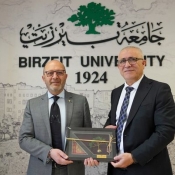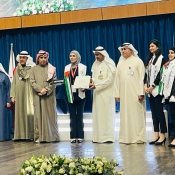Physics Guest Lecturer Explores Advances in Surface Plasmon Resonance Devices
On March 4, 2013, the Faculty of Science at Birzeit University sponsored a lecture by guest professor Khawla Qamhieh. The lecture focused on advances in Surface Plasmon Resonance (SPR) sensing devices over the last decade, as knowledge about the devices has advanced both from a fundamental physics point of view and as highly sensitive devices for optical biosensing of a large number of small biological or chemical entities in gaseous and aqueous environments.
Although SPR sensors have the highest sensitivity among evanescent waves-based sensing techniques, intensive efforts have been undertaken in the last two decades to improve their specificity and figure of merit. One of the prominent features of SPR phenomenon is electromagnetic fields’ enhancement at the surface, in particular, when SPR is excited in sub-wavelength-shaped nano particles (NPs).
It has been found that surface-enhanced Raman scattering as a vibrational spectroscopy based detection technique can be considerably enhanced due to the excitation of localize SPR (LSPR) in NPs and patterned substrates.
The lecture, entitled “Complexation between Polyelectrolyte andnbsp;Oppositely Charged Macroions,” explored the fundamentals and principles of SPR sensors as well as the sensing mechanism in some of the most widespread SPR sensor configurations were discussed. Using sculptured thin films as substrates for SERS enhancement was also demonstrated.
Khawla Qamhieh obtained her B.Sc. in physics from Jordan University, and her PhD in theoretical physics from Clarkson University, USA, 1990. She received the DAAD award 2006nbsp;at Frankfurt Institute for Advanced Science in Germany, andnbsp;a Fulbright scholarship to conduct research at the University of Houston in the US in 2006. She has been a visiting professor at Lund University in Sweden since 2003.
Professor Qamhieh has published many peer-reviewed articles covering interparticle interactions in colloidal systems and developed a theoretical model for the complexation of DNA with dendrimer which is important in gene therapy.
nbsp;






